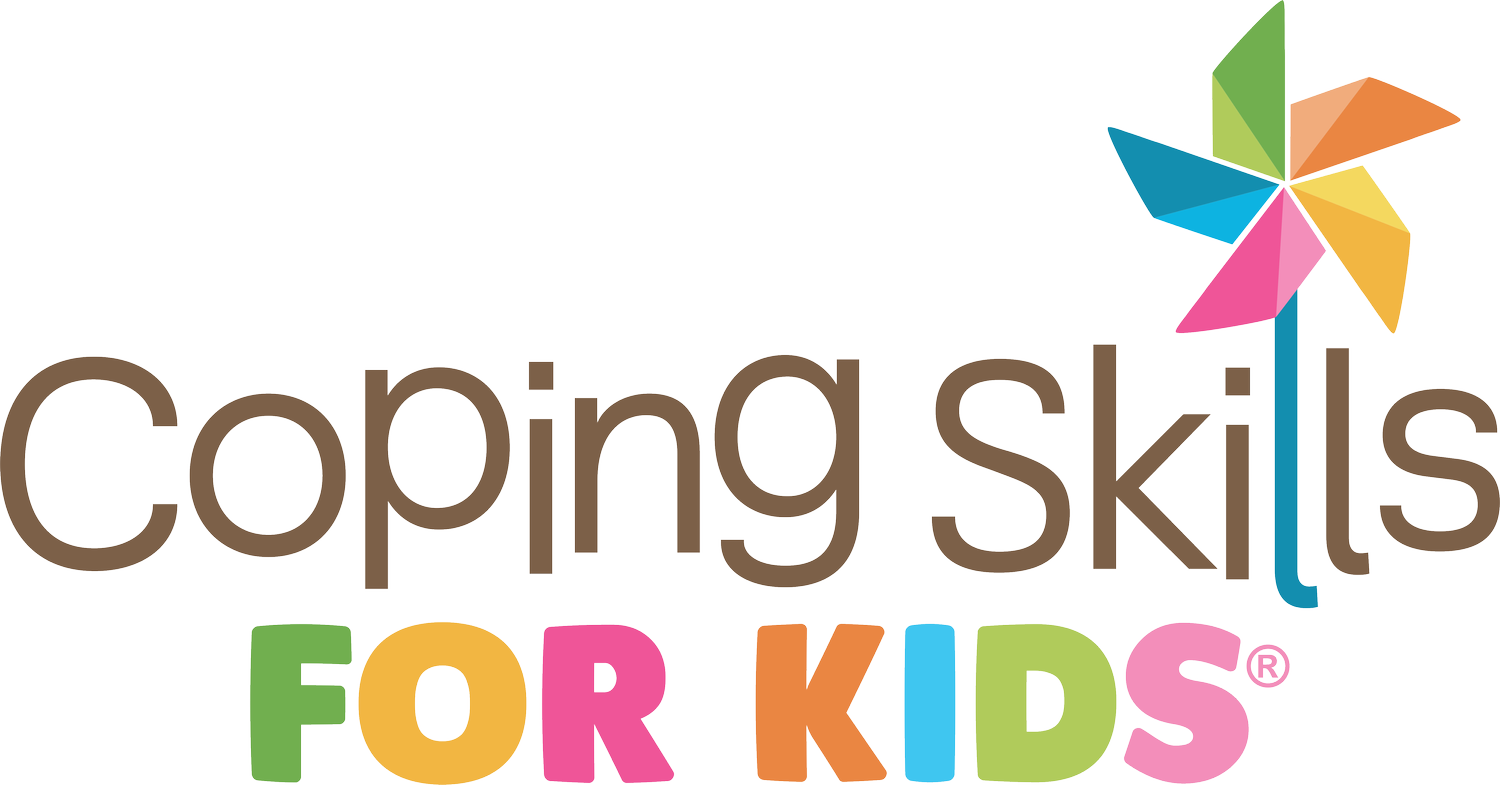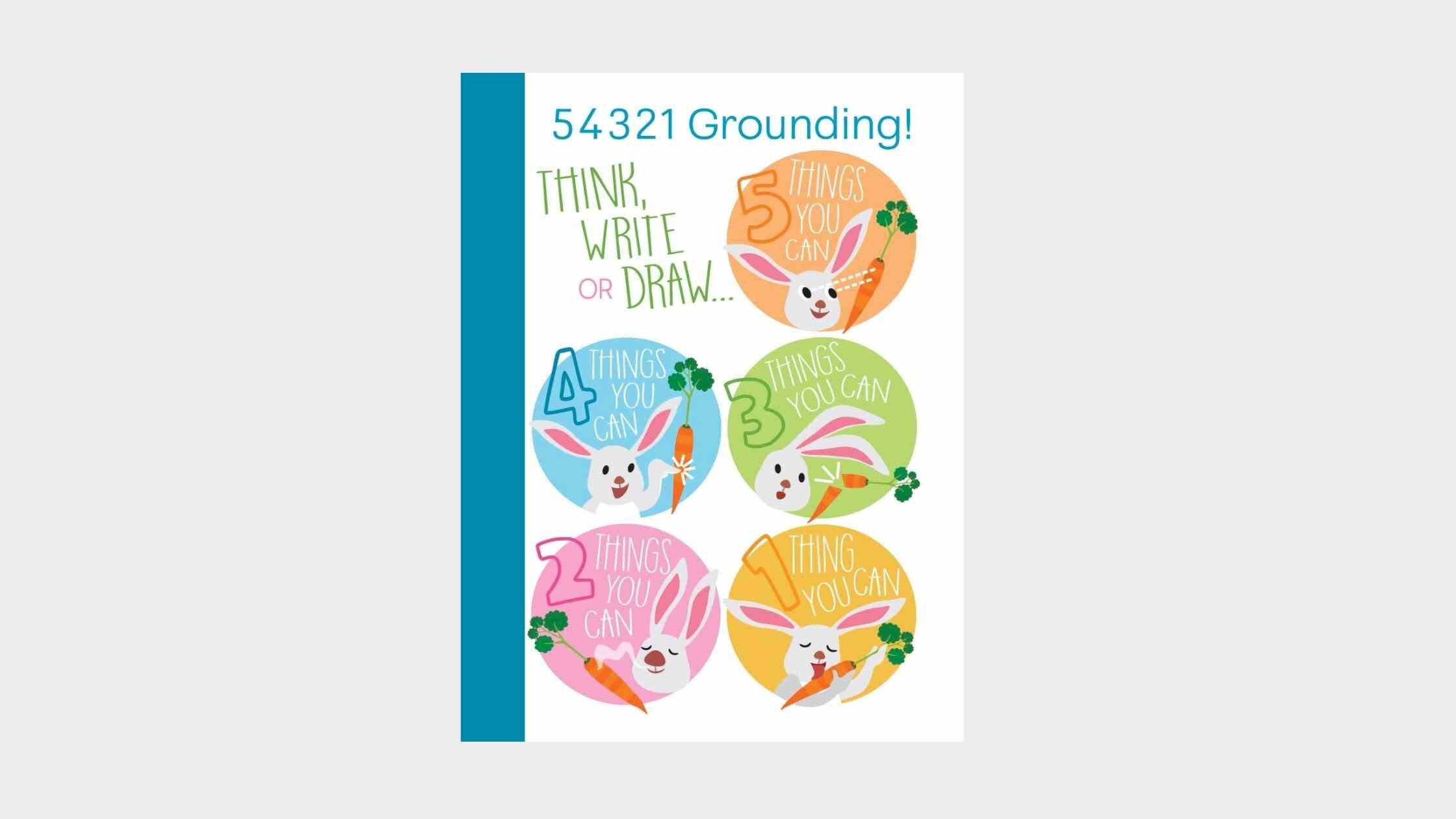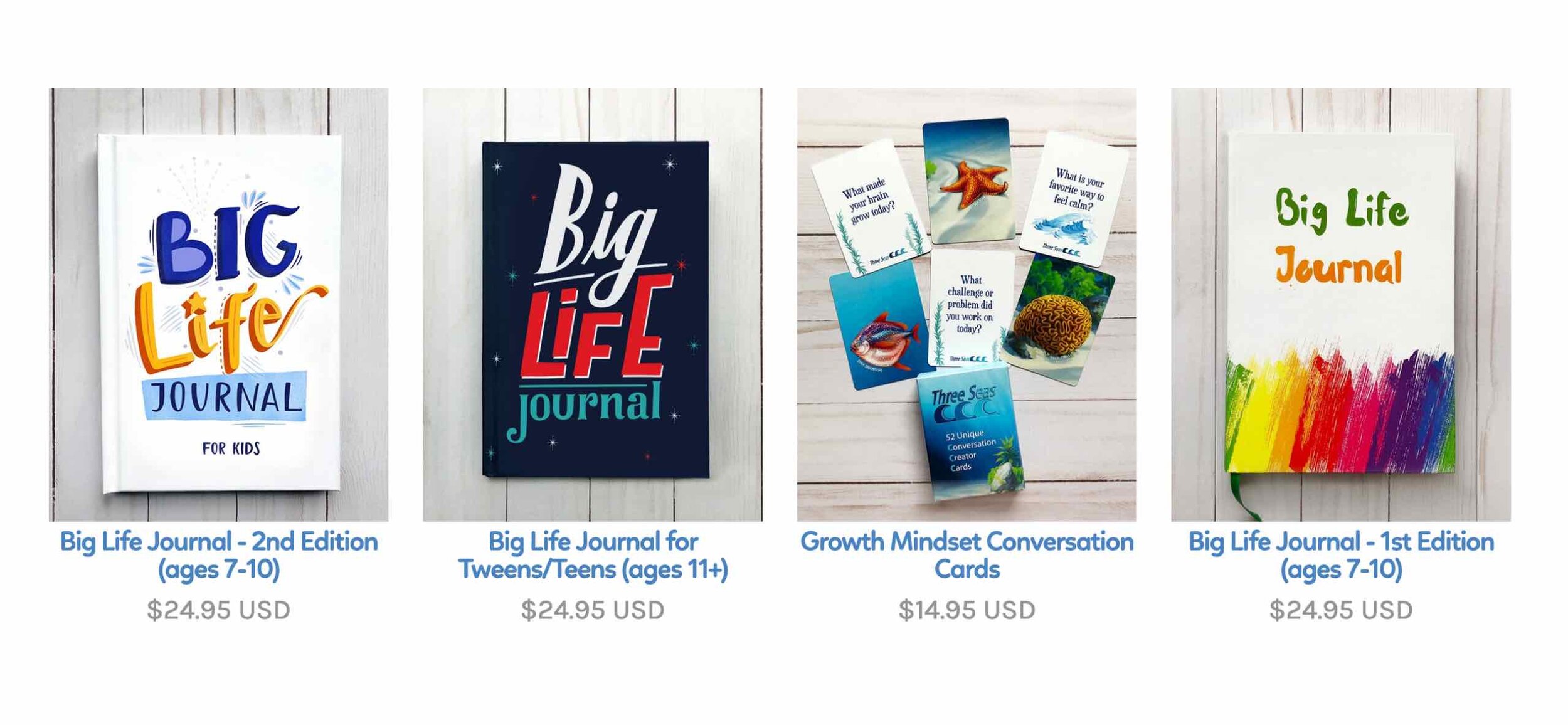A Child Therapist’s Favorite Resources for Calming Anxiety in Children
This page contains affiliate links, read the disclosure statement here
Inside: Kid tested strategies used by child therapists for calming anxiety, including ideas to calm down, books to read and videos that can help
It’s happening again. Your daughter is frustrated and stomping away down to her room, slamming the door and in general “has her cranky pants on”. You say calm down, but she yells back “I don’t know how to do that!!!”
We tend to tell our kids to “calm down” without ever giving them explicit directions on how to deal with stress and anxiety. Here’s a collection of the best tools and tips I’ve found to teach children how to calm down and relax.
Quick Ways to Calm Down
Sometimes you’ll need a quick way to help your child calm down and you don’t have much with you. Maybe it’s when you’re out at Target or stuck in traffic. These tips will come in handy at those times:
Imagine your favorite place - it’s like taking a mini vacation wherever you are
Think of your favorite things
Name animals alphabetically (alligator, bear, cow, dog, etc…)
Squeeze Something (play dough, clay, silly putty, your fists, a stress ball)
Get a Cold Drink of Water
Give yourself a hug - squeeze tight!
Remember the words to a song you love
Put your arms straight out in front of you, palms facing out.
Put one hand over the other at the wrists and interlace your fingers.
Swoop your hands and arms toward your body and then place your interlaced hands on your chest.
Cross your feet at the ankles and put your tongue on the roof of your mouth.
Stay still for one minute.
It’s great to have a big list of coping skills to try when your child needs to calm down. Here are two more short lists of ideas for calming down at home or at school.
From Imperfect Families - Strategies to use at home
From Encourage Play - 10 Strategies to Help Kids Calm Down at school or home
Deep Breathing
People usually roll their eyes initially when they hear “breathing is important”. But I will continue to say it and explain why. It’s so simple, yet has such a big impact on your body’s physiology.
When you and calm and relaxed, your body is in “rest and digest” mode. You breathe normally, your heart rate is lower and your muscles are relaxed. However, when stress or anxiety or anger occurs, your body automatically switches into “flight, fight or freeze” mode. Your muscles tense up, your heart rate increases and your breathing becomes more shallow.
Taking deep breaths, instead of shallow breaths, is one way to tell your body to get back to resting and digesting. That’s why deep breathing is important!
Luckily, there are some fun ways to teach kids deep breathing techniques
Things to use
Bubbles
Feathers
Pinwheels
Stuffed animals
Dandelions
Deep breathing using shapes
Things to say
Breathe in like you are smelling a flower, breathe out like you are blowing out birthday candles
Arms up and breathe in, arms down and breathe out
Pretend your belly is a balloon. Breathe in and make the balloon bigger, then breathe out and make the balloon shrink.
Videos to watch
Breathing at Sea Otter Cove from Stress Free Kids
Make a Coping Skills Toolbox
A Coping Skills Toolbox is a kit that you create to help your child calm down when they are upset, anxious or worried. In order to get the most benefit from this, you should create this kit before an issue occurs. When your child experiences anxiety, then they can pick out an item from their Coping Skills Toolbox. This is one of my favorite ways to help kids learn to calm their anxiety.
Here are some other fantastic ideas for what to put in a coping skills toolbox/calm down kit from And Next Comes L
Create a Calm Down Spot
You can create a place specially designed to allow to calm down in a few steps
Find a spot and make it cozy (ask your child for help with that - maybe they can place a favorite blanket or stuffed animal inside)
Add calming tools
Explain how to use it and practice before
When they are starting to escalate, catch it early and give them a calm reminder about their calm down spot
Use Understanding and Supportive Language
Use the following phrases as a way to support your child, let them know that you’re going to support them and help them in any way that you can.
“I’m here for you”
“Talk to me and tell me what’s going on”
“How can I help?”
“Together, we can work on this. We’re a great team”
“I love you”
“Do you want a hug?”
Here are some more ideas of what to say to calm an anxious child.
From Go Zen - 49 Phrases to Calm an Anxious Child
From Lemon Lime Adventures - What to Say to Calm an Anxious Child
Listen to Story Podcasts for Children
Did you know there are podcasts with stories for children? Usually the hosts have a soothing voice and the stories tend to be pretty short. Your child can listen to these podcasts as a way to have some down time.
Use Calming & Mindfulness Scripts
There are scripts you can read to your child to help them relax and calm down. Slowly and carefully read the words as your child listens and follows the instructions. Check out Inner Health Studios list of scripts you can use with your child. If you prefer not to read a script, there are ones that are pre-recorded.
There are also scripts to practice mindfulness with children. Eline Snel has written a great book on Mindfulness with Kids, Sitting Still Like a Frog. Here are the several scripts that can be used from that book!
Annaka Harris also has several pre-recorded scripts to help kids practice mindfulness
Confused about how to introduce mindfulness to kids? Check out these resources:
Simple Ways to Introduce Mindfulness and Meditation to Children
11 Simple But Effective Ways to Teach Mindfulness to Kids
Make a Mind Jar
What you need:
Empty Jar
I’ve used empty soda bottles, empty water bottles, glass jars and plastic containers. Use whatever makes sense for you and your family. For instance, for the calming jars the kids have in their room, I used a heavy duty plastic bottle. I didn’t want them to accidentally knock over a glass jar in the dark - that would be a huge mess!
Water
I’ve had the best results when I’ve used warm water - it makes it easier for the water and paint to combine.
Glitter Paint
I prefer using glitter paint (or glitter glue) instead of glitter because then I’m not cleaning up glitter for weeks at my house after we make them :-)
To make your jar, add glitter paint to the bottom of the jar until it just covers the bottom of it. Add warm water. Put the cover on and shake to help the ingredients combine. Once you are satisfied with the look of your jar, then you can super glue the lid shut so it doesn’t spill. In a pinch, I’ve also used duct tape to secure the lid.
Watch Make a Simple Calming Jar from Coping Skills for Kids on YouTube
Wet Ingredients
Sometimes you want the glitter/other items to stay afloat longer or for a shorter amount of time. Here are some different ingredients you can use as the wet ingredients.
Hair Gel
Corn Syrup
Glue
Glitter Glue
Glow in the dark paint
Dry Ingredients
Legos
Glitter
Small stones
Small shells
Glow in the dark stars
To see several other ways to make calming jars, take a look at what Preschool Inspirations did.
Use Visuals
One of the first things I always like to do with kids if they are struggling is to start using visuals. When you’re stressed and anxious, it’s harder to read and take in information. Visuals are easier.
I like to keep calming cue cards in my children’s coping skills toolboxes so that they can make a decision about what coping skill they can use. Sometimes pulling out a list is too much in the moment. You can make your own cue cards.
Take several index cards or small pieces of cardstock
On each one, write or draw one coping skill
Hole punch the cards and place them on a keyring (to make them extra sturdy, you can laminate them)
Put them into the coping skills toolbox for easy access
Using visuals is a powerful way to help kids. When kids are overwhelmed, sometimes it’s hard for them to figure out what to do. By having cue cards, your child can have a visual reminder of what calms and relaxes them.
To make things a little easier, I’ve created ready to use coping skills cue cards for you. There are four different sets: Calming, Physical, Distracting, and Processing. If you'd like all 4, I created a set where you can download them all together.
Get Good Rest
If your child is anxious, they may also be having a difficult time getting settled for bedtime. Here are some ideas to help your child get settled at bedtime.
PINPOINT WHAT THE FEAR IS
One of the most important things to do is to figure out exactly what is causing the anxiety. Is it fear of the dark? Is it a worry about something in the closet? Is it monsters? Is it spiders? Figuring out the cause of the fear will help you come up with ways you can help your child combat it.
REARRANGE THE ROOM
Are there particular spots of the room that seem to be darker or cause more fear at night than others? Go into the bedroom during the day with your child and talk about the spots that make your child nervous. Try moving night lights and furniture around for a more calming room arrangement.
TRANSITIONAL OBJECTS
If your child has a hard time separating from you, try a transitional object. This is a special item that helps your child feel comforted. It helps them feel like part of you is still present even when you're not there. It could be something like a stuffed animal or a special stone or necklace, or a sweatshirt of yours. The object isn’t what matters, it’s what the object represents. They can keep it and hold it all night long to help them relax and go to sleep.
Find more strategies here: 12 Kid Friendly Strategies to Calm Anxiety at Night
Looking for some calming guided meditation to help get to sleep at night? Try one of these: Best Guided Meditations for Sleep.
Use a Journal
Whenever I sit down and talk with someone about their coping skills, one of the first
things I ask is if they have tried writing about it. Why do I always start with journaling as
a way of processing through difficult feelings?
It’s easier to write about than talk about hard things
Journaling helps you process what’s happening.
It’s convenient.
It’s not graded
It can help you solve a problem
It can help you re-frame your thinking
Looking for a journal for a child or teen? Check out Big Life Journals!
Read Helpful Books with Your Child
General Anxiety
The Coping Skills for Kids Workbook by Janine Halloran. This book has over 75 strategies for kids to try to help them manage their stress and worry. This book also includes colorful worksheets to help kids learn more about their anxiety and what they can do to manage their stress.
Wilma Jean the Worry Machine by Julia Cook I love that when Wilma Jean’s physical reactions are described, they’re also illustrated. When is says she has knots in her stomach and her knees lock, her stomach really looks like it’s tied in a knot and there’s a real lock around her knees. I love the activity she does with her teacher, going over worries she can control and worries she can’t, it’s a great way to help kids manage their anxiety.
David and the Worry Beast by Anne Marie Guanci David’s anxiety is a beast, and the more anxious he gets, the bigger it grows. David learns to control his thoughts, and his beast shrinks. There’s also a couple of pages for parents and kids in the back.
When My Worries Get Too Big by Kari Dunn Buron This book is wonderful! There are several pages where kids can add in their own thoughts, worries and what helps them relax. This book also uses the 5 point scale to talk about stress and different ways to manage it.
What To Do When You Worry Too Much by Dawn Huebner, PhD This book goes through several ways that can help kids manage anxiety, including setting a time for worries, thinking about things that make you happy and resetting your body with activity or relaxation. There are some interactive places in this book, where a child can write down their worries, draw some images of things that might help, etc.
What To Do When You’re Scared and Worried by James J. Crist This is one of my favorite books for kids to help them deal with anxiety. Near the beginning of the book is a checklist that helps kids narrow down what they are anxious about. The beginning of the book covers the basics of what anxiety is and how to help manage with coping skills. The next section of the book goes into detail about different types of anxiety kids might experience, including Separation Anxiety, Phobias and Panic Attacks.
Separation Anxiety
The Kissing Hand by Audrey Penn Classic about managing separation anxiety when kids start school. My daughter’s kindergarten teacher read this on our visit to school the first day.
When I miss you by Cornelia Maude Spelman This is perfect for little ones who have a hard time dealing with the fact that they are away from their parents during the day. It suggests a couple of things they can do to help and reassurance that parents will come back at the end of the day.
Wemberley Worried by Kevin Henkes Poor Wemberley worries about everything, and then she gets really worried when she is about to start school.
Looking for more support?
Join the Hub










